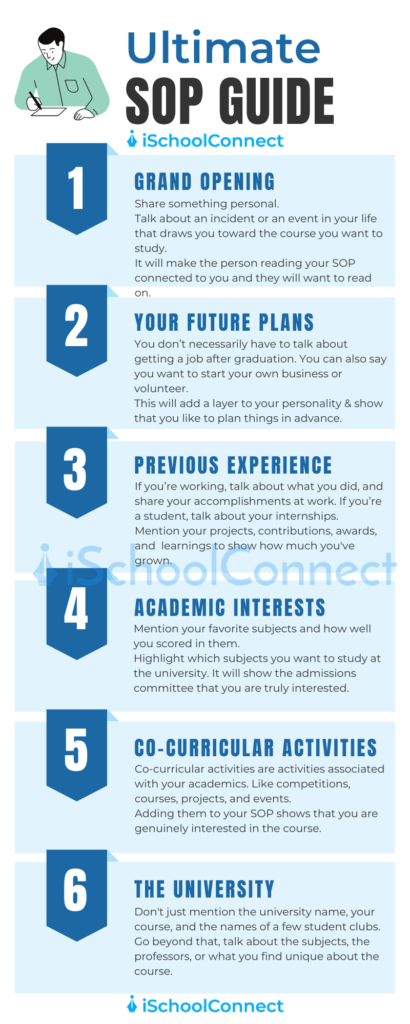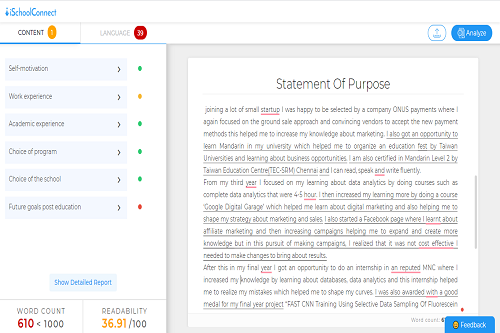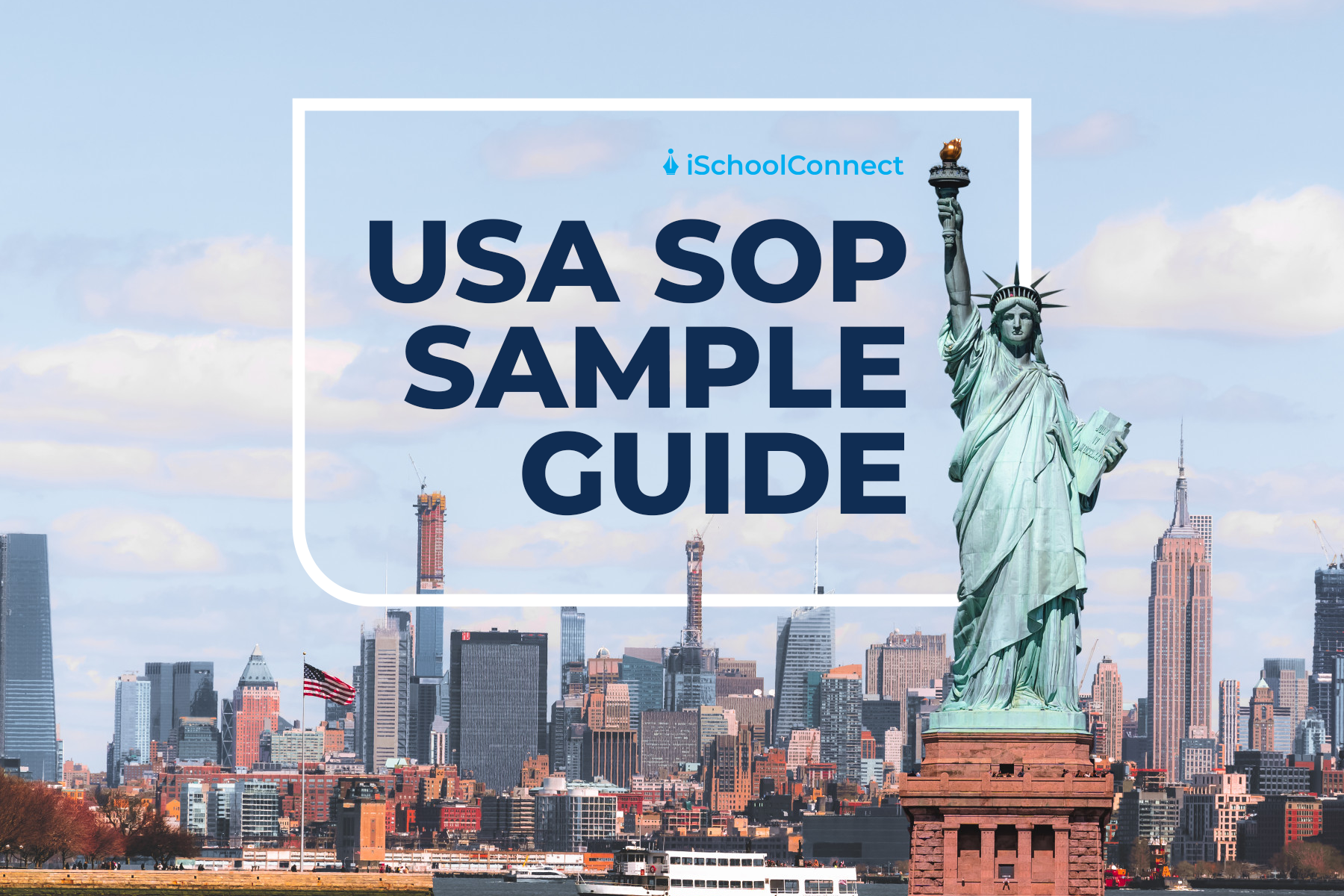Table of Contents
- Introduction to Statement of Purpose for scholarship
- What is an SOP?
- Difference between a university SOP and an SOP for a scholarship
- Most common topics in an SOP for a scholarship
- How to write statement of purpose for scholarship?
- Wait! what if there was a tool that could help you write your SOP for a scholarship?
- Bonus tip
- Key takeaways
- FAQ
Introduction to Statement of Purpose for scholarship
Writing a Statement of Purpose is not easy, especially when it’s an SOP for a scholarship.
You need to consider a lot of factors before you start, like
- What are the evaluators looking for?
- How can I cover it under the given topic?
- Is there a word limit?
- How should I structure my Statement of Purpose for a scholarship?
- How to write a Statement of Purpose for a scholarship?
- What do I need to do once I’m done?
This blog has answers to all these questions and more. It will help you figure out how to start the process of writing your SOP, how to go about it, and how to make it perfect and impressive!
What is an SOP?
A Statement of Purpose is basically an essay that summarizes your aim behind applying for something – be it a university program, a fellowship, or a scholarship.
But that’s not all an SOP does.
You see, most of your application packet consists of concrete facts – academic scores, skills, aptitude, etc.
Your SOP, on the other hand, is the only document that can bring out your personality in front of the evaluation committee and help you make a lasting impression.
To that end, your SOP should cover multiple aspects about you-
- Why you’re applying
- What have you done to deserve acceptance
- How this move fits with your short-term & long-term goals
- Your X factor
Lastly, your SOP is a great means to showcase your communication skills. So break out your writing chops, pick a structure for your SOP, and get cracking!

Note: Remember that your SOP has a word limit. While the general word limit for a Statement of Purpose is between 600-1000 words, it’s best to check the requirements on the official website before starting.
Difference between a university SOP and an SOP for a scholarship
A Statement of Purpose written to a university aims to convince a college admissions committee that you’re the right candidate for their program and their institution.
On the other hand, a Statement of Purpose for a scholarship is meant to persuade an institution or an organization to grant you funds for your education.
Since the purpose of these documents is different, the way you structure them will also be very different
- To start with, your SOP for a scholarship will be based on the topic given to you. This is usually not the case for a university SOP, where you can draw your storyline as you see fit.
- The focus of your scholarship SOP will depend on the type of scholarship you’re applying for. It could be about your academic merit, athletic ability, social background, cultural differences, etc.
- The content in your SOP for a scholarship will depend on the topic, type of scholarship, and word limit given to you. These factors will decide what you can and cannot include in your statement.
Now that we know what your Statement of Purpose for scholarship should be like let’s get started with the writing!
Most common topics in an SOP for a scholarship
The topic of your SOP, as we’ve already discussed, will depend on the type of scholarship you’re applying for.
Let’s take a look at these categories one by one-
Academic scholarships
Evident from the name itself, academic scholarships offer funds based on the academic merit of a student.
If you have scored a 4.0 GPA and have been a merit student most of your life, this scholarship is for you.
The topics for such scholarships can revolve around their subject of interest and/or the motivation behind your academic rigor.
Athletic scholarships
An athletic scholarship is one of the best ins for students who have athletic prowess and want to study in reputable universities.
While applying, you may be asked to share why you pursued a particular athletic interest, what it taught you, and how it aligns with your values. You might even be asked to share one of your teaching moments.
Need-based scholarships
While some students excel at studies and others excel at sports, not all have the same resources to help them pursue their careers.
For such students, universities and organizations have need-based scholarships – grant amounts for struggling students who would do much better with a little bit of help.

Here, students will have to showcase their potential and highlight what they can bring to the table if given the opportunity to do so.
Scholarships based on gender, cultural diversity, and social background
This is perhaps one of the most unique scholarship types. But it’s there for a reason.
Your role as a woman, a member of a certain society, or as part of a different cultural background makes you who you are.
These grants are provided to students coming with unique experiences that affected them and changed their perspective forever.
And that is why the topic you choose for such a scholarship would be highly personal. But it must also fall under the bracket heading given to you by the organization providing the scholarship.
How to write statement of purpose for scholarship?
Now that you have an idea of the topic of your SOP let’s get down to the actual task of writing it.
The structure of your SOP is very important – the way you begin your statement, add convincing and memorable points, give it a timeline, and finish at the end can change everything.
So follow the 7 tips we’ve given below and learn how to write the perfect SOP for a scholarship-
Have a grand opening
As you start working on your SOP, it’s important to understand the power of storytelling.
Having a story will make it easier for the reader to relate to you and also lighten the process of writing your Statement of Purpose.
So our first tip is this – start with a grand opening.
Share one life experience that draws you towards your passion. It may be a memory you keep going back to every time you feel low or stuck.
Note: To find this opening, start drawing a timeline of your life. Ask yourself what experiences define you. And write it all down on a piece of paper. When you start connecting the dots, you’ll find your story.
Talk about your passions
This doesn’t mean you simply state what your interests are. Take time to link them to incidents and experiences from your life.
For example, if your passion is to be in marketing, talk about how you got into it and what drives you to provide the best possible products to people.
And if possible, try to link it to your opening story. It would be a great way to keep up a good impression.

State your future goals
It’s one thing to know a subject and be good at it, and entirely another to be aware of what you’re going to do with your knowledge.
Have clearly defined short-term and long-term goals, and make sure you add them to your SOP.
To get started, write down where you see yourself 3, 5, and 10 years from now and include the top 2-3 highlights you think are the best.
Share how your experiences have prepared you for this
Consider Colin. He started taking a real interest in his engineering career during the second semester of his undergraduate Electronics program.
Colin is a part of a student committee that gets together to organize technical fests. They spend their evenings tinkering with machines and building new gimmicks.
Colin also takes interest in developing new projects as part of the academic curriculum.
He worked as a content writer part-time. And he even tried to launch a startup.
All these experiences have helped him improve his technical skills, communication, and taught him to manage people better.
Shared in a scholarship SOP for pursuing Master’s in Engineering Management, these experiences will definitely improve his chances of getting a grant.
Flaunt your college selection
If you have already been accepted at a college (or luckily, multiple colleges), share it in your SOP.
Not only will this convince the evaluation committee about your academic finesse, but it will also show them that you are capable of planning ahead and securing your future.
Naturally, they would want to help.
Mention why you believe you’re worthy of this scholarship
This is your chance to address the primary question behind writing the SOP for a scholarship.
But do not approach this subject directly.
Our suggestion is that you bring out 1 main point in every paragraph throughout the Statement of Purpose. And use the last paragraph to string together these main points, saying that this is why you deserve the scholarship.
Moreover, keep in mind that the 1 main point you bring up in each paragraph should be in line with the topic of your SOP.
End on an emotional note
If you have started with a story, end it the same way.
Use the first half of your last paragraph to summarize the highlights in your SOP and the second half as a callback to your opening.
This would really tie things up and help the reader remember every major part of your Statement of Purpose, leaving them with a striking and impressive image of you.
So there you have it! 7 tips that will help you write a super-impressive SOP for a scholarship!
So what are you waiting for? Take up a pen and get started!
Wait! what if there was a tool that could help you write your SOP for a scholarship?
While you can use tools like Grammarly while drafting your MBA Statement of Purpose, there’s one tool that can help you much more.

The SOP Analyzer is an AI-based tool that will do all these things for you-
- Check for plagiarism
- Root out grammatical errors
- Tell you which points you might’ve missed out on, and
- Help you improve the language of your SOP!
You can try it out here using a 7-day FREE trial and nail your Statement of Purpose quicker than you’d ever imagined!
Bonus tip
Different people have different ways of writing their SOP, and there are no set rules you need to follow.
But one rule applies to all – your first draft should not be your final Statement of Purpose.
Once you’re done writing it the first time, keep your SOP aside for a few days and forget about it.
When you read it the next time, you will have a fresh perspective and a bunch of edits you’ll want to make.
After you’re done with these changes, pass it on to 2-3 trusted friends and have them review it. Maybe even ask them to check for grammatical and syntactical errors.
Take their feedback, make the final edits, and only then submit your SOP.
Key takeaways
- The SOP is an essay that summarizes your reason for applying for a particular scholarship and justifies why you should be considered for the same.
- Some types of scholarships are academic, athletic, need-based, gender, cultural, and social background-based scholarships.
- Ensure the opening of your SOP is attractive, and try to maintain a persuasive body filled with information about your academic and professional background.
- The AI-based analyzer tool will provide helpful suggestions, point out errors, and much more, to ensure you write the perfect SOP.
Hope you enjoyed this blog. In case you get stuck or need someone for proofreading, you can always Contact us. We’d be happy to help! Until then, all the best with your SOP.
Liked this blog? Read next: STEM scholarships available to you
FAQ
Q1. What qualities make a good candidate for a scholarship?
Answer- Passion, confidence, being a team player, and analytical skills are a few qualities that make a good candidate.
Q2. Do I need to put my name in the SOP for a scholarship?
Answer- In general, you don’t have to put your name in the SOP since it is present throughout your scholarship application.
Q3. How long should my SOP be?
Answer- Unless specified, your SOP should not exceed 1,000 words.






